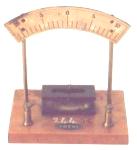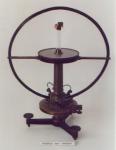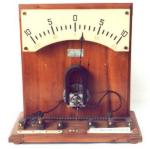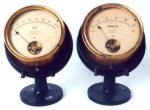Description
A declination magnetic needle is placed in the centre of a circular circuit (turn)
of 33 cm diameter, placed along a magnetic meridian.
If the current passes through the circuit, the needle is subject to a couple of forces
that tend to dispose it perpendicularly to the turn. The couple intensity depends on the
current intensity that passes in the turn.
With a simple calculation we can see that, in a given place, the current intensity is
proportional to the tangent to the deviation angle.
When the angle is 45° the created field of the current is equal to the terrestrial
field.
|


 Menu
Menu













